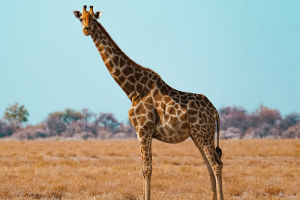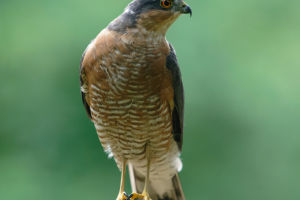The sable antelope (Hippotragus niger) is one of Africa’s most striking and majestic animals, known for its striking black coats and impressive, backward-curving horns.
Found primarily in the savannas and woodlands of eastern and southern Africa, the sable antelope is a fascinating species that has intrigued scientists, nature enthusiasts, and wildlife photographers alike.
Let's delve into some of the most interesting facts about this magnificent creature, showcasing its unique characteristics and behaviors.
1. Impressive Horns
One of the most distinctive features of sable antelopes is their magnificent horns, which can grow up to 165 centimeters (about 65 inches) in length. These horns are not exclusive to males; females also possess them, although their horns tend to be shorter and thinner. The horns of sable antelopes are curved backward in a graceful arc and are used for both defense against predators and dominance battles among males.
Males use their horns during intense territorial disputes, where they engage in combat by kneeling and locking horns. Despite the fierce nature of these battles, they seldom result in serious injury, as the contest is more about showing strength and dominance than causing harm.
2. Color Differences by Age and Gender
Sable antelopes exhibit a fascinating change in coat color as they age. Calves are born a reddish-brown color, which gradually darkens as they grow older. By the time they reach adulthood, males develop a striking, glossy black coat with white facial markings, giving them an almost regal appearance. Females, on the other hand, retain a more reddish-brown coat throughout their lives, although it darkens slightly with age.
This difference in coloration helps males signal their maturity and readiness to compete for territory and mates, while females remain less conspicuous, allowing them to blend more easily into the environment, which is beneficial for protecting calves from predators.
3. Territorial Behavior
Male sable antelopes are highly territorial and will fiercely defend their area from rivals. They typically establish territories in regions rich with resources such as water, food, and shelter. Once a male has claimed a territory, he will closely monitor it, and younger males or those without a territory must live in bachelor groups until they are strong enough to challenge dominant males.
The dominant males guard their harem of females, ensuring no other males attempt to mate with them. This strict social structure ensures only the strongest and most capable males pass on their genes, contributing to the overall health of the species.
4. Social Structure and Hierarchy
Sable antelopes live in herds that are generally composed of females and their young, led by a dominant male. These herds can range in size from a few individuals to over 70 antelopes. The dominant male plays a crucial role in the group, protecting the herd from threats and keeping rival males at bay.
Within these herds, there is a clear social hierarchy. Younger females and calves follow the lead of older, more experienced females, while males often form separate bachelor herds until they reach sexual maturity. The structure helps maintain order and stability within the herd, ensuring their survival in the wild.
5. Adaptation to Diverse Habitats
While sable antelopes are most commonly associated with the African savannas, they are remarkably adaptable and can be found in a variety of habitats, including grasslands, woodlands, and even open plains. They tend to favor areas with a mix of open spaces and dense vegetation, which offers both ample grazing opportunities and shelter from predators.
These antelopes are grazers, primarily feeding on a variety of grasses, but they have been known to browse on leaves and shrubs when necessary, especially during the dry season when food is scarce. Their ability to adapt to different habitats and diets has contributed to their survival across various regions of Africa.
6. Behavior During the Dry Season
During the dry season, sable antelopes exhibit interesting behavior to cope with the scarcity of resources. They are known to migrate within their home range in search of food and water, sometimes traveling long distances to find suitable grazing grounds. Sable antelopes are also known to drink water regularly and prefer to stay near permanent water sources, although they can survive for extended periods without drinking by relying on moisture from the plants they consume.
7. Predators and Defense Mechanisms
Despite their imposing size and horns, sable antelopes are not immune to predation. Lions, leopards, and hyenas are among their primary predators. However, adult sables, particularly males with their long, sharp horns, are formidable opponents, and many predators avoid attacking them. Sable antelopes are known to stand their ground when threatened, using their horns to defend themselves and their herd. This defensive behavior can make them difficult prey, and predators often target weaker, younger individuals instead.
8. Conservation Status
Although sable antelopes are not currently classified as endangered, their populations have been declining due to habitat loss, poaching, and competition with livestock for resources. Conservation efforts have been implemented in various parts of Africa to protect these animals and ensure their long-term survival. Many national parks and wildlife reserves have established protected areas where sable antelopes can thrive without the threat of human interference.
The sable antelope is a symbol of grace, strength, and resilience in the African wilderness. Its striking appearance, social dynamics, and ability to adapt to challenging environments make it a unique species worth admiring and protecting. As human activity continues to threaten their natural habitats, it is vital that we support conservation efforts to ensure the sable antelope remains a thriving part of Africa’s rich biodiversity for generations to come.


